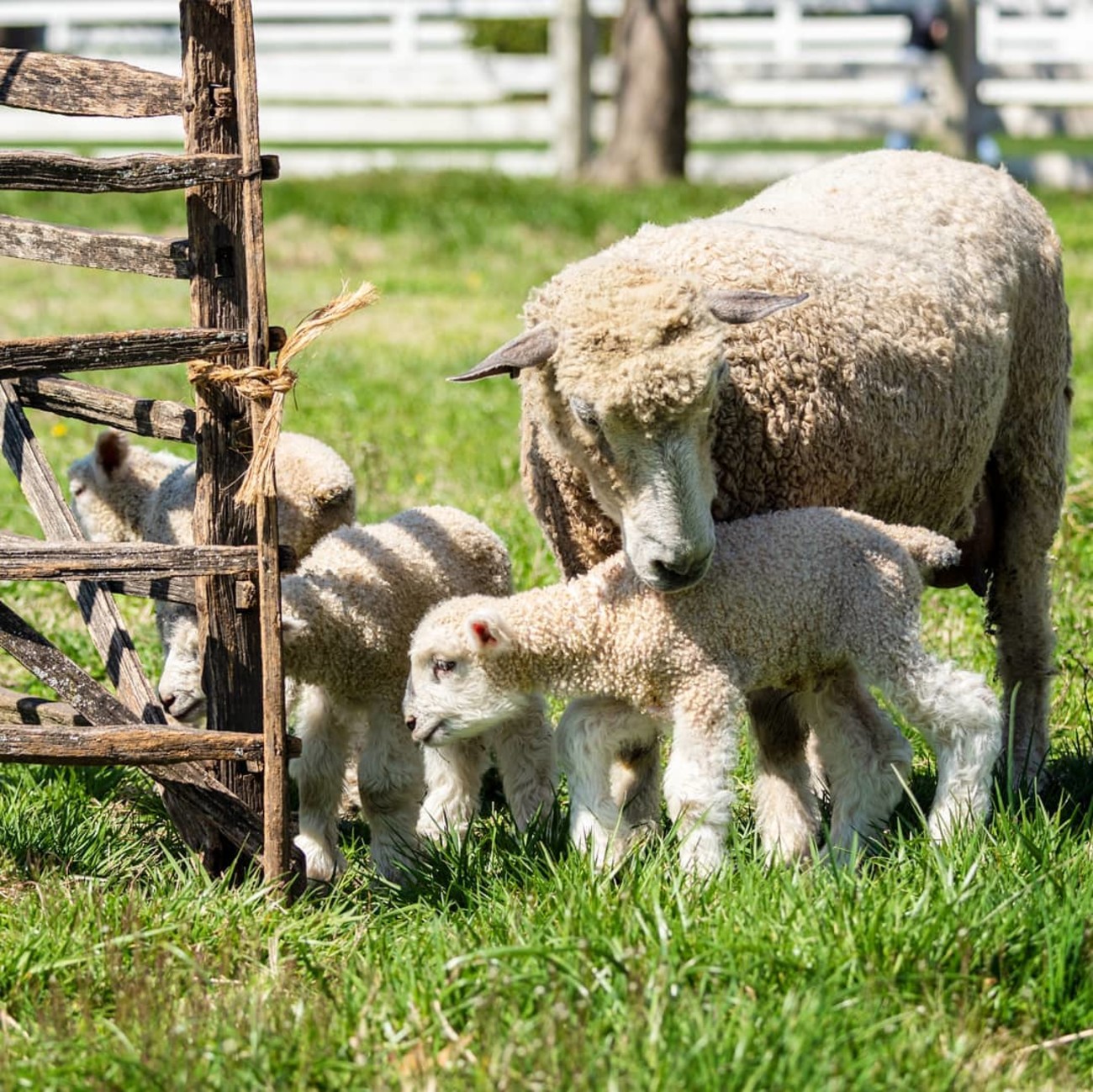We’re celebrating 30 years of Leicester Longwool Sheep
As we welcome the most recent additions to the flock, we’re also reflecting on the breed as a whole since this year marks a major milestone for Colonial Williamsburg’s Rare Breeds Program.
While the historic sites are temporarily closed to the public due to the coronavirus health crisis, our Coach and Livestock crew is still hard at work caring or our animals. And the next couple of weeks will be busy for them as our Leicester (pronounced Les-ter) Longwool Sheep lamb.
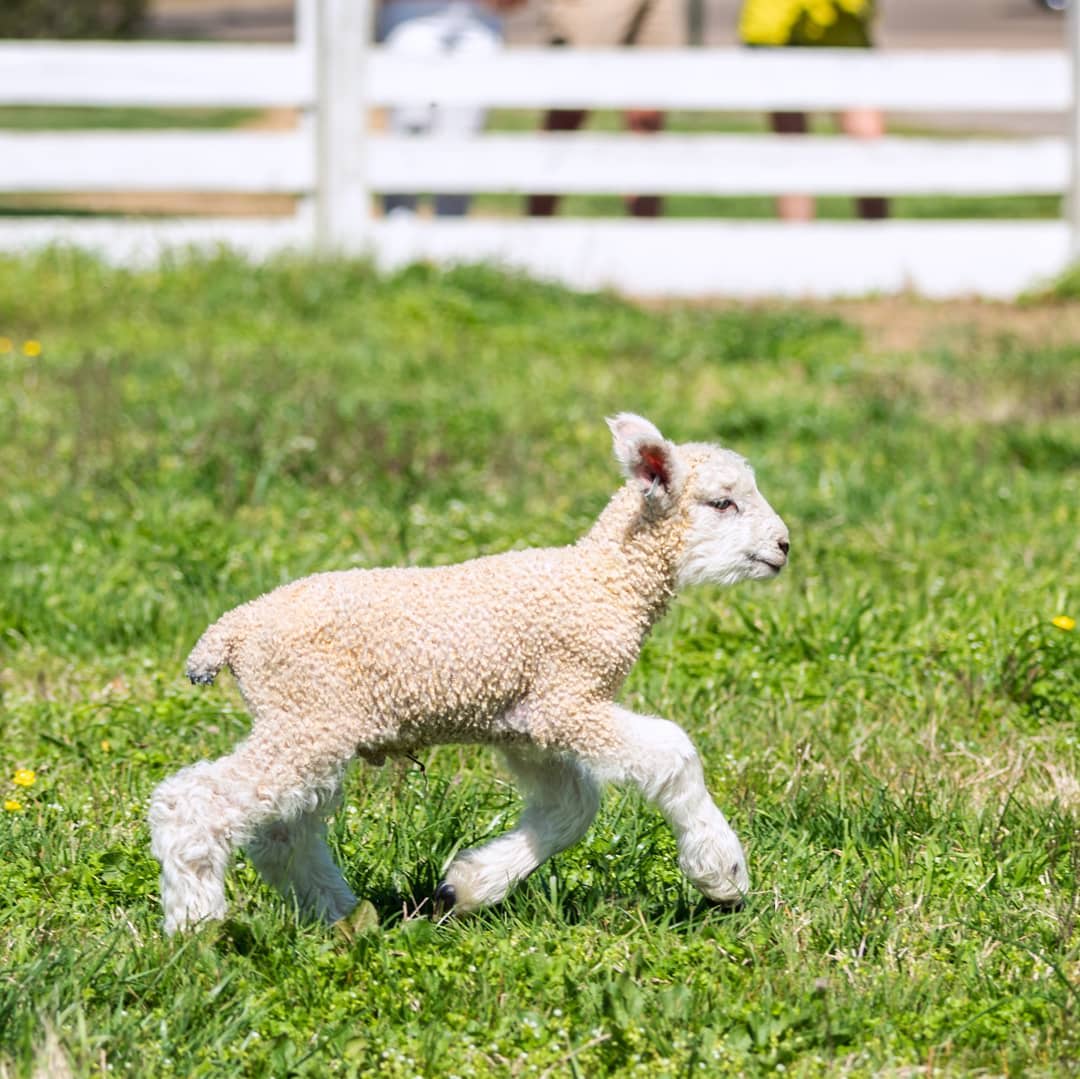
It’s standard procedure for lambs to be brought into the stables after they’re born and they aren’t released back into the pastures until they comply with our “lamb checklist.” Items include ear tags, a series of shots, tail docking, and an overall health check. The ewes are also monitored to make sure they haven’t retained any part of the placenta and the lambs must prove they know how to nurse on both sides. Some can be returned back to pasture in just a couple days.
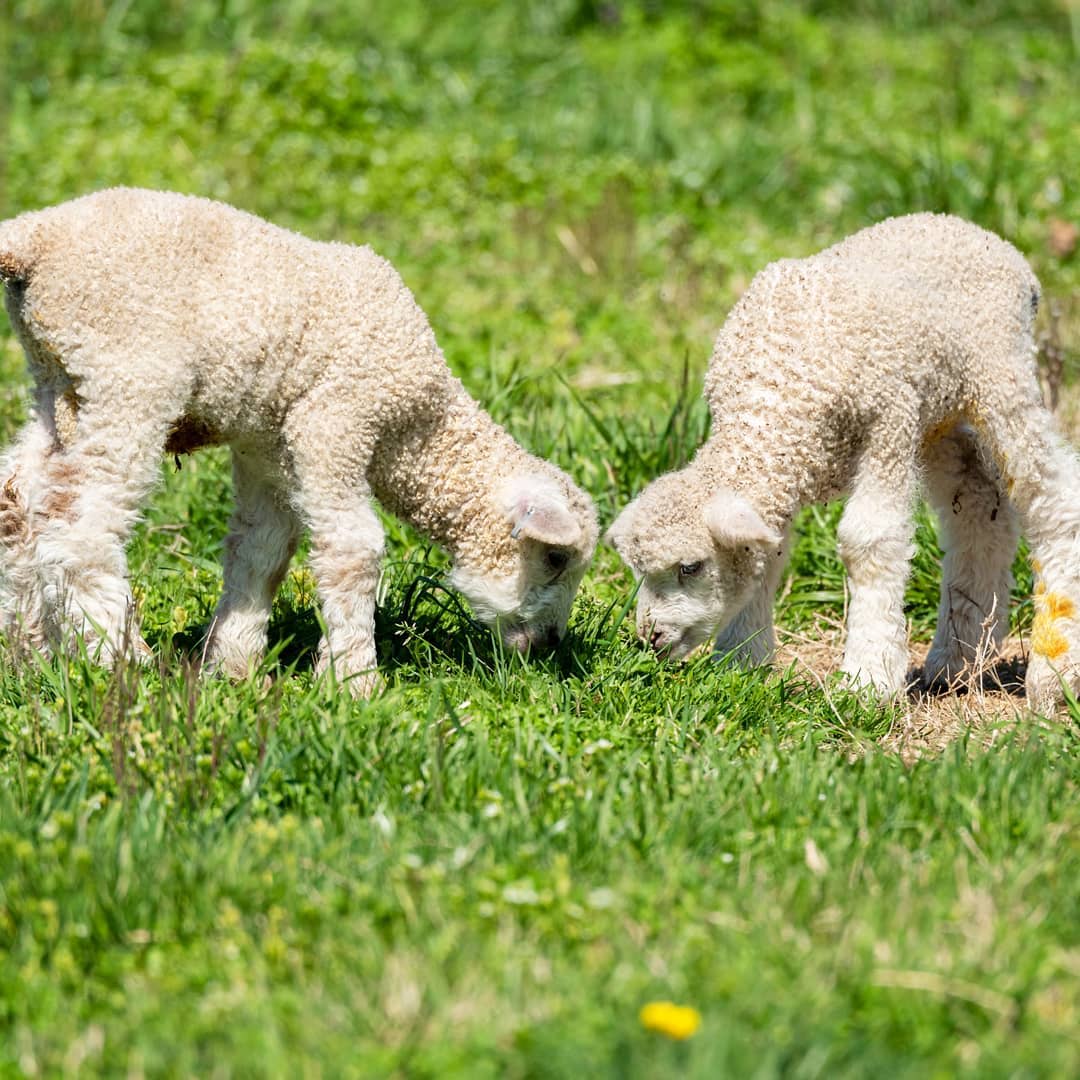
While it’s easy to get wrapped up in the undeniable adorableness of these guys, it’s even more rewarding to know that each lamb is helping to preserve this 18th-century breed. The Leicester Longwool Sheep were introduced to us 30 years ago and on this anniversary, we find it important to provide a little background into how this particular breed ended up in Williamsburg and part of our Rare Breeds Program.
George Washington is known as a politician, a statesman, and a soldier. What many don’t know is that he was also a passionate farmer with a particular interest in sheep. In fact, Washington raised 600-900 heads every year at Mount Vernon. During the 18th century, Leicester Longwool Sheep were mentioned specifically in several British publications and in her research, so program supervisor Elaine Shirley decided they would be the perfect addition to our program. But it appeared they had died out in America, likely around 1920.
That’s when then Coach and Livestock Director Richard Nicoll reached out to Ivan Heazlewood, a third-generation breeder in Australia, who personally took on the task of organizing a flock for Colonial Williamsburg. And in February of 1990, eight ewes, one ram, and six lambs arrived.
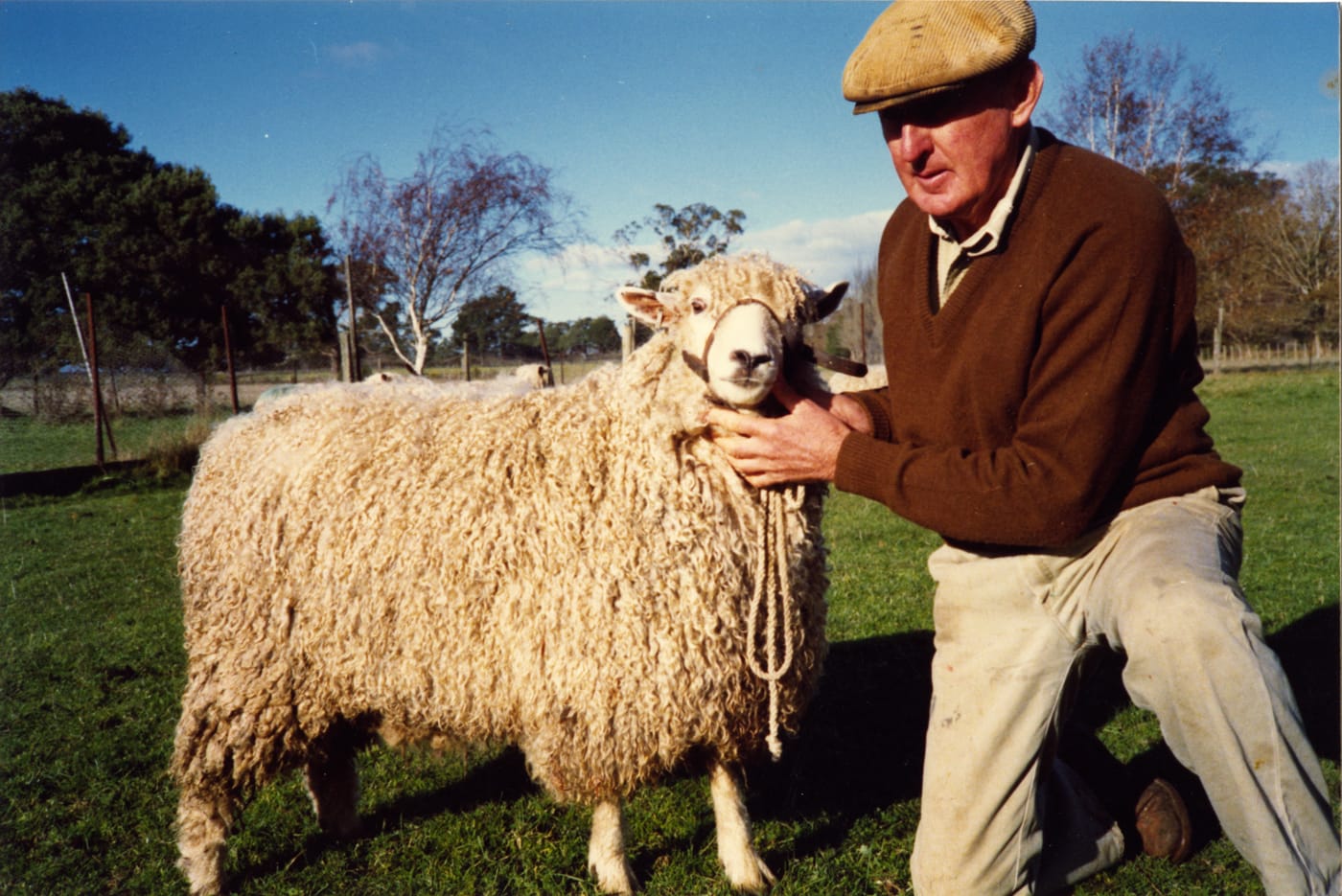
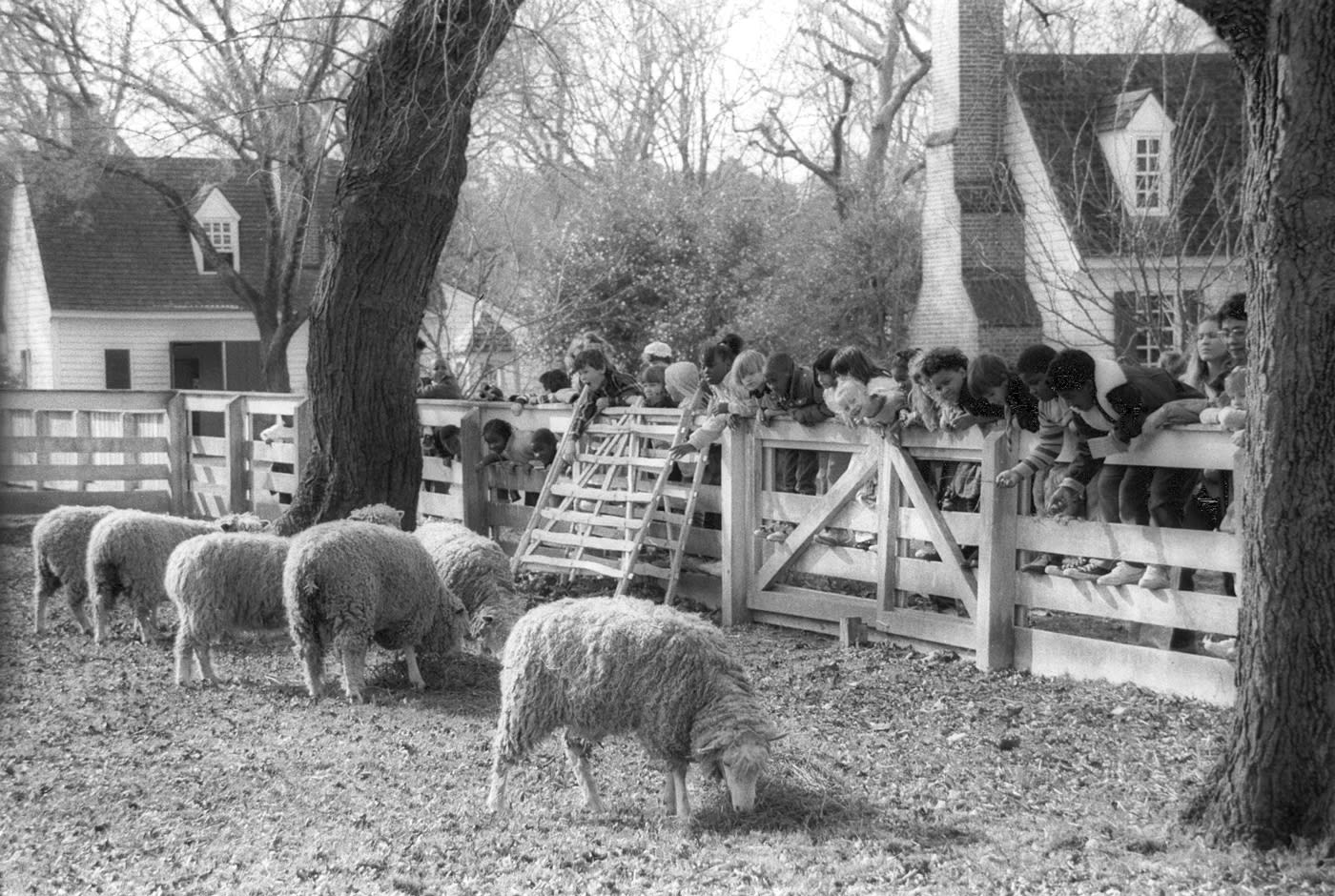
What started as a flock of 15 has grown to about 50, with several “satellite” flocks started with breeders throughout the country. As of last year, there are now 120 flocks of Leicesters in the country. Elaine summed up the magnitude of this statistic five years ago when she said, “It’s a great example of how our Rare Breeds Program… and one organization like Colonial Williamsburg can really make a difference.” And the numbers are even better today, 30 years after Colonial Williamsburg brought the breed back to the U.S.
Watch the video below to meet some of this year's new additions to the flock, and learn more about how we care for them.
